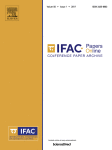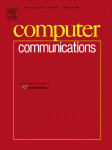یک مدل ارزیابی عملکرد برای دفتر مدیریت پروژه براساس رویکرد چند معیاری
چکیده مقاله فارسی:
توجیه برای اجرای یک دفتر مدیریت پروژه (PMO)یک مشکل مکرر در سازمانها است و وجود آن اغلب توسط سهامداران مورد سوال قرار میگیرد.در مدیریت پروژه سازمانی، PMO ها نقشها و کارکردهای متنوعی ارایه میدهد که عملکرد آنها مربوط به دستیابی به اهداف استراتژیک است. مطالعات نشان میدهد که PMO میتواند میدان جنگ میان قدرت و کنترل ، بین مردم و فرایندها و بین جناحهای سیاسی باشد. با توجه به این وضعیت، تعریف یک مکانیزم ارزیابی عملکرد اجازه می دهد تا تأیید کند که چگونه PMO می تواند به منافع مدیران پروژه و ذینفعان کمک کند ، و در عین حال به عنوان چارچوب استراتژیک در شرکت عمل کند. این مقاله یک مدل ارزیابی عملکرد برای PMO از صنعت نرمافزار براساس رویکرد چندمعیاری را به عنوان راهی برای تعامل همه سهامداران در این فرآیند پیشنهاد میکند . براساس فهرستی ۷۹ شاخص عملکرد به ۱۷ معیار تقسیم شده توسط چارچوب ارزشهای رقابتی، فرآیند ارزیابی PMO با استفاده از تکنیک MACBETH تعریف شد.نتایج نشاندهنده یک تصویر واضح از نقاط قوت و ضعف عملکرد PMO و نیز اولویتبندی برای بهبود هر یک از آنها با توجه به دیدگاه مشترک تمامی سهامداران است.
چکیده مقاله انگلیسی:
The justification for implementing a Project Management Office (PMO) is a recurring problem in organizations, and its existence is often questioned by stakeholders. Under the organizational project management, the PMO presents a variety of roles and functions, whose performance is related to strategic objectives achievement. The literature shows that the PMO can be the battlefield between power and control, between people and processes, and between political factions. Given this situation, the definition of a performance evaluation mechanism allows the verification of how the PMO can serve the interests of project managers and stakeholders, and at the same time serve as a strategic framework within the company. This paper proposes a performance evaluation model for PMO from the software industry based on a multicriteria approach as a way to engage all the stakeholders in such process. Based on a list of 79 performance indicators divided into 17 criteria defined by the Competing Values Framework, a process for evaluating PMOs was defined using the MACBETH technique. The results showed a clear picture of the strengths and weaknesses of the performance of the PMO as well as the priority for improving each of them according to a shared vision of all the stakeholders.
بررسی سیستماتیک ادبیات پژوهش و نظریه های تحقیقات آینده
بررسی سیستماتیک ادبیات پژوهش و نظریه های تحقیقات آینده
آخرین مقالات
آخرین مقالات فارسی ترجمه شده



